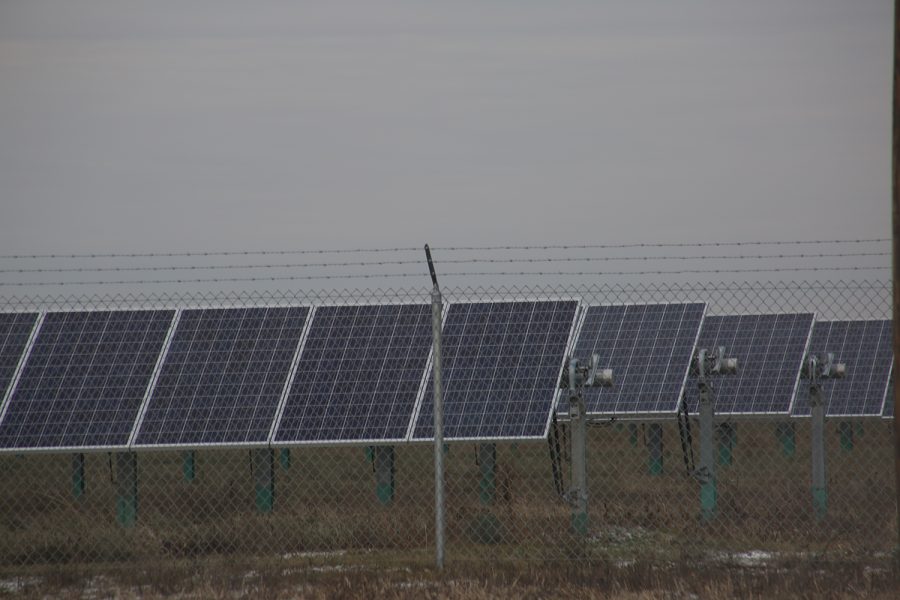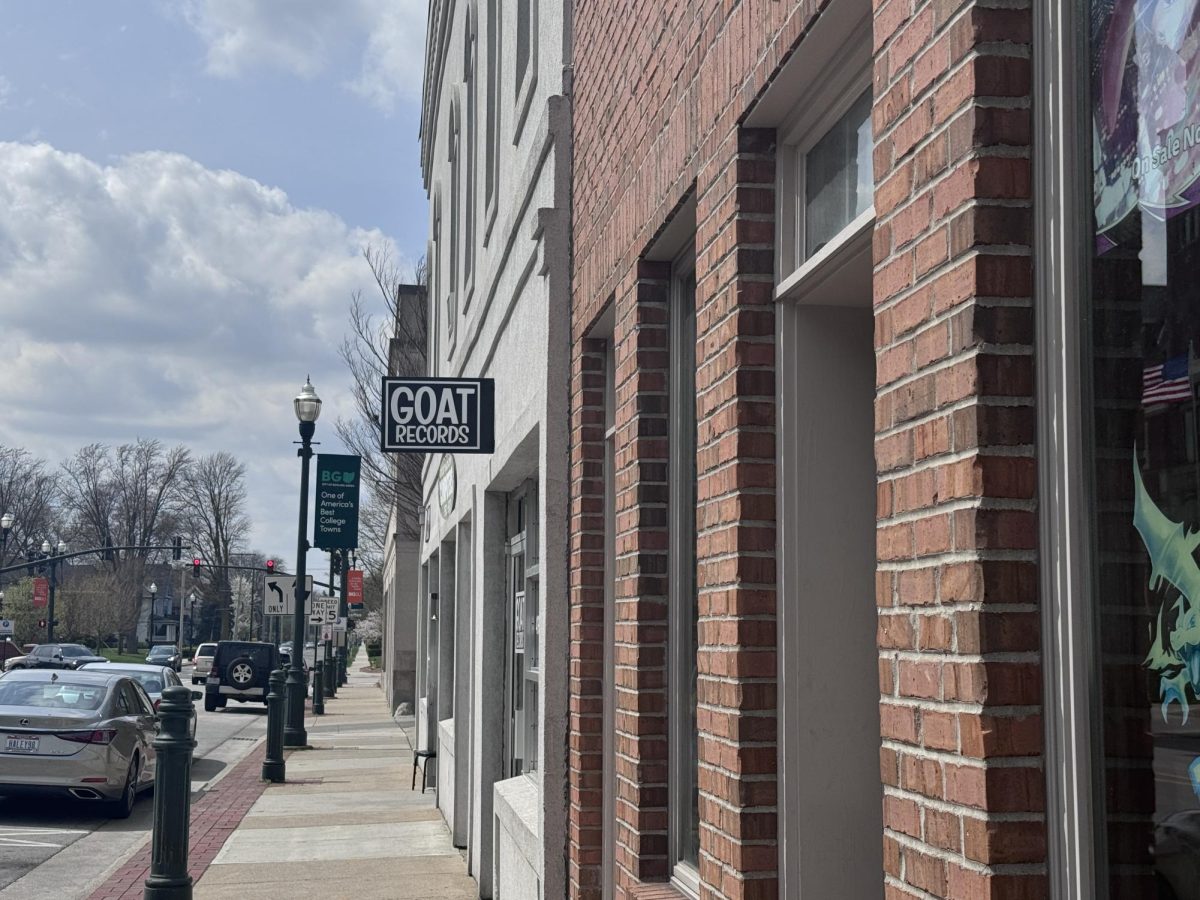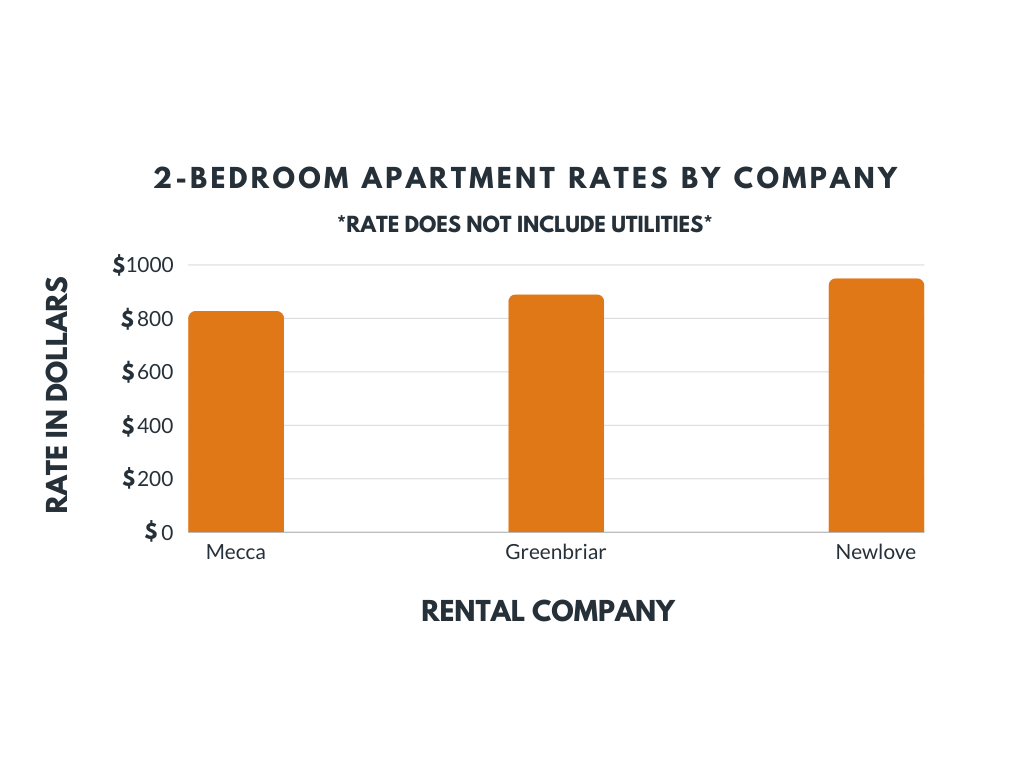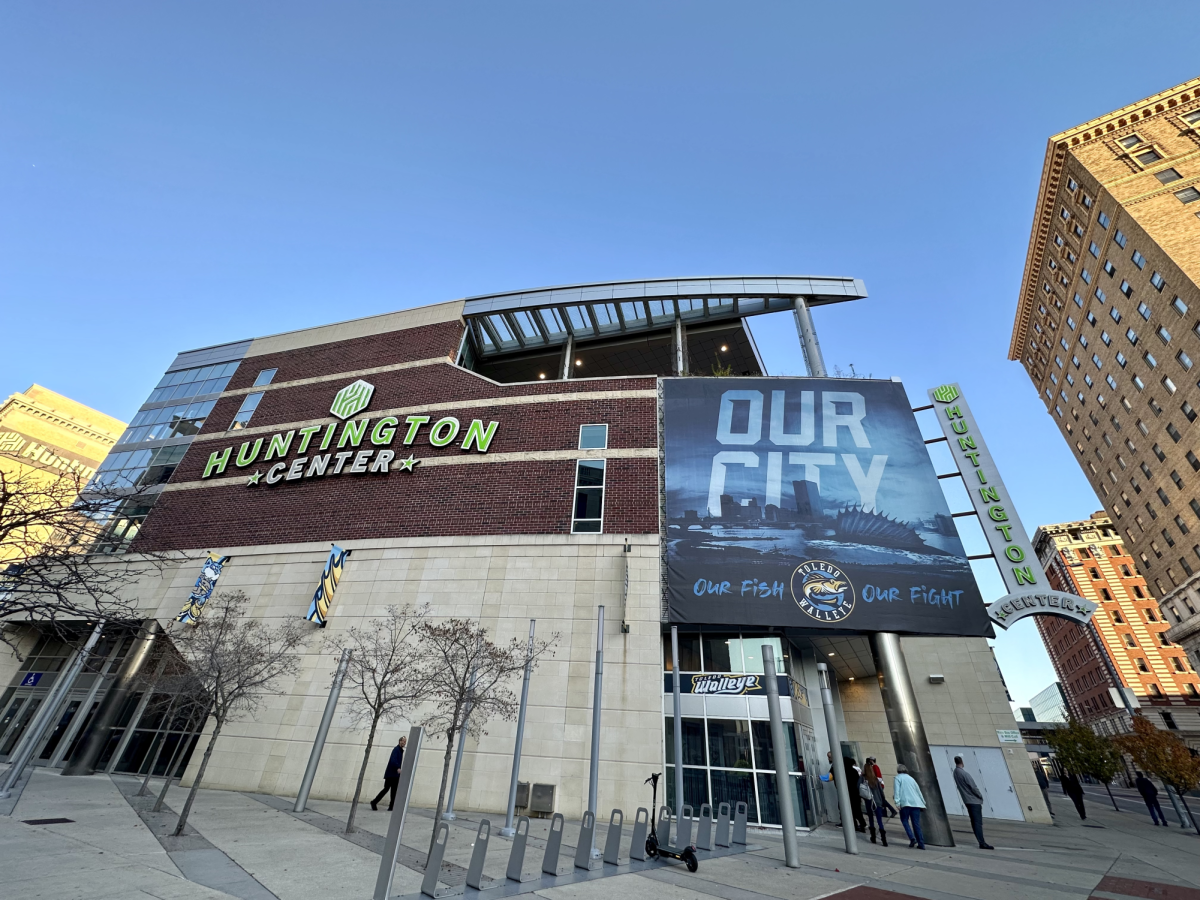The city of Bowling Green draws 41 percent of total power usage from sustainable energy sources, providing a home to Ohio’s largest solar field and the state’s first utility-sized wind farm.
The solar field and wind farm collectively produce approximately 27.2 megawatts of electricity annually, enough energy to power an estimated 5,500 homes, curbing approximately 35,000 metric tons of carbon dioxide emissions every year.
“We invest heavily in hydro-electric power and solar,” Mayor Richard Edwards said. “We have the largest solar-field of any community in the whole state of Ohio. We were the first to have wind turbines in this community. This is history, and it’s good history. And it reflects us as best ‘hometown.’ Other communities aren’t even close to us. I don’t want to get into a fight with Toledo, but they don’t even come close to what we’re doing here.”
Ohio’s bigger cities, such as Toledo, Columbus and Cincinnati, struggle to rival Bowling Green’s sustainability progress, but they do implement several various key initiatives that have significantly improved energy efficiency and conservation.
The city of Toledo currently follows its “Going Beyond Green” sustainability plan, led by the Toledo-Lucas County Sustainability Commission. According to a sustainability index that evaluates the city’s natural, social and economic systems, Toledo currently scores 41 out of 100, a fair rating. But by 2030, Toledo has goals to increase its index to 70.
“Things that we are doing pretty well: economic and work force development goes well here,” TLCSC Director Melissa Hopfer said. “We are seeing steady job growth, good business retention and we’re also seeing a number of businesses come into the area.”
Similar to Bowling Green, Toledo possesses a sustainable business recognition program where firms, community groups and businesses are commemorated for their sustainable practices, and where the continuation of those practices is incentivized. It has also implemented a complete streets program, constructing biking lanes to create a community more conducive to walking and biking, according to Hopfer.
The Toledo-Lucas County Sustainability Commission is currently putting heavy focus on its water quality, Hopfer said. Harmful algae blooms and excess waste have significantly contributed to the city’s water quality deterioration.
Bigger cities, like Cincinnati and Columbus, face greater challenges when trying to go green to cultivate support and participation for key initiatives from their residents.
“Transportation is difficult,” Green Cincinnati Plan Coordinator and Sustainability Coordinator Oliver Kroner said. “We are a car-dependent city, so shifting away from the personal automobile has been a challenge. So much of what we do is, at heart, behavior change, and habits die hard, right? So, finding ways to effectively communicate what we’re trying to do and the programs we offer and promoting participation has been a challenge.”
Cincinnati has seen success, however, achieving an 18 percent reduction in carbon emissions since 2008. The city is also implementing multiple new anaerobic digesters, and has successfully lobbied the state of Ohio to strengthen renewable portfolio standards and market for more solar projects.
The city of Columbus has also been able to reduce greenhouse gas emissions by 35 percent through the establishment of the city’s sustainability office in 2005 and its programs and projects.
David Celebrezze, Columbus GreenSpot coordinator, spoke about the changes. “We have a lot of different community groups and businesses that practice sustainability,” Celebrezze said. “We had a green team for a number of years that was made up of 40 different businesses and non-profits. We have also been in the process of changing all the city’s lights to LED.”
None of these cities, however, come close to 41, the percent sustainability of Bowling Green, but many are seeing improvements.
























